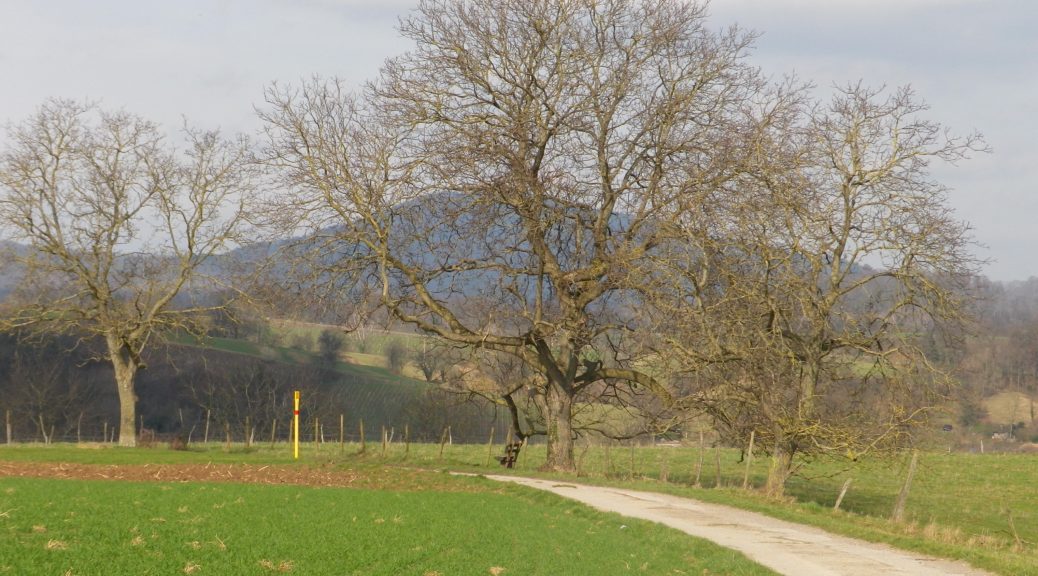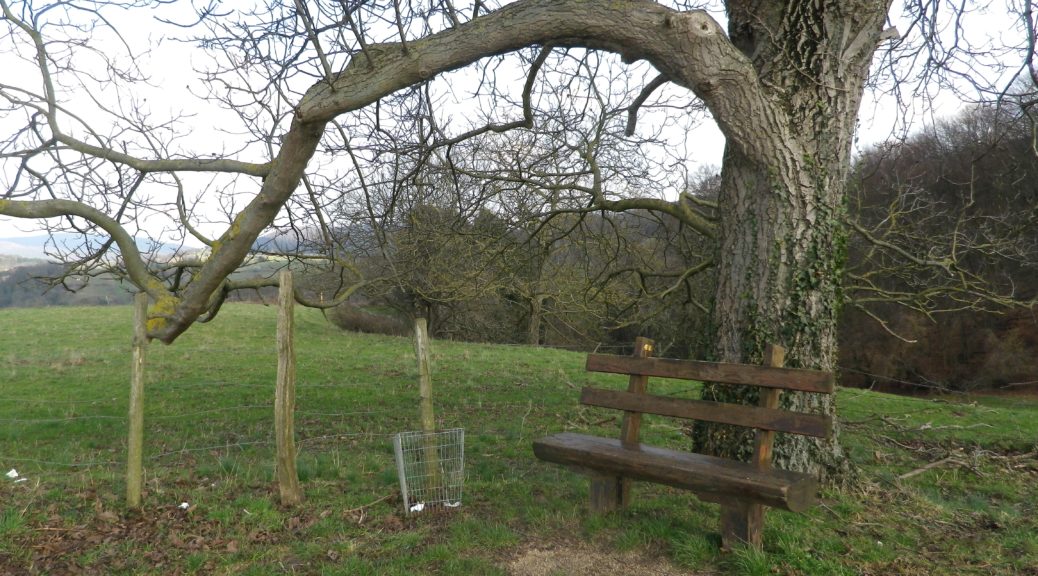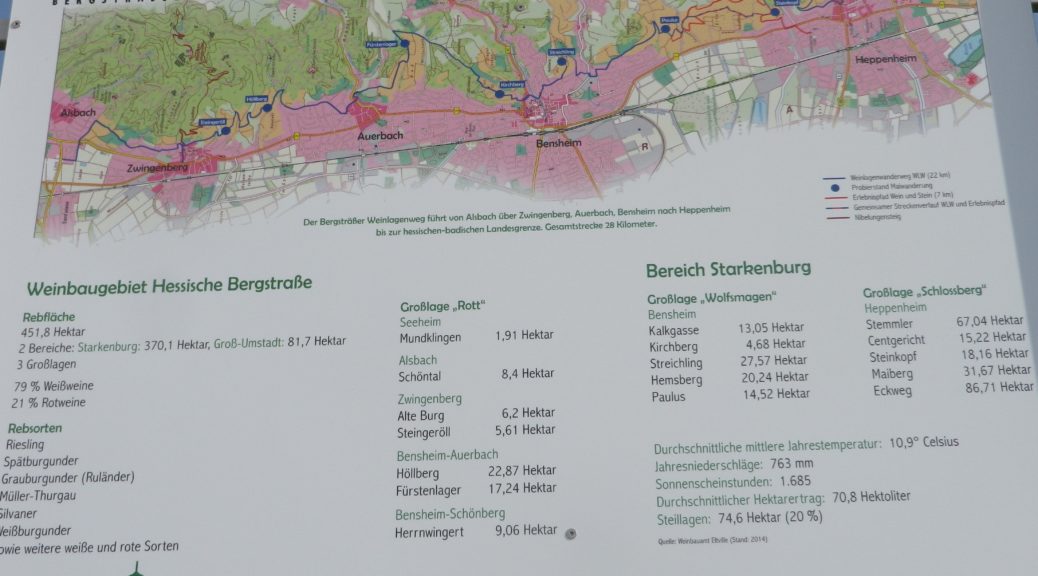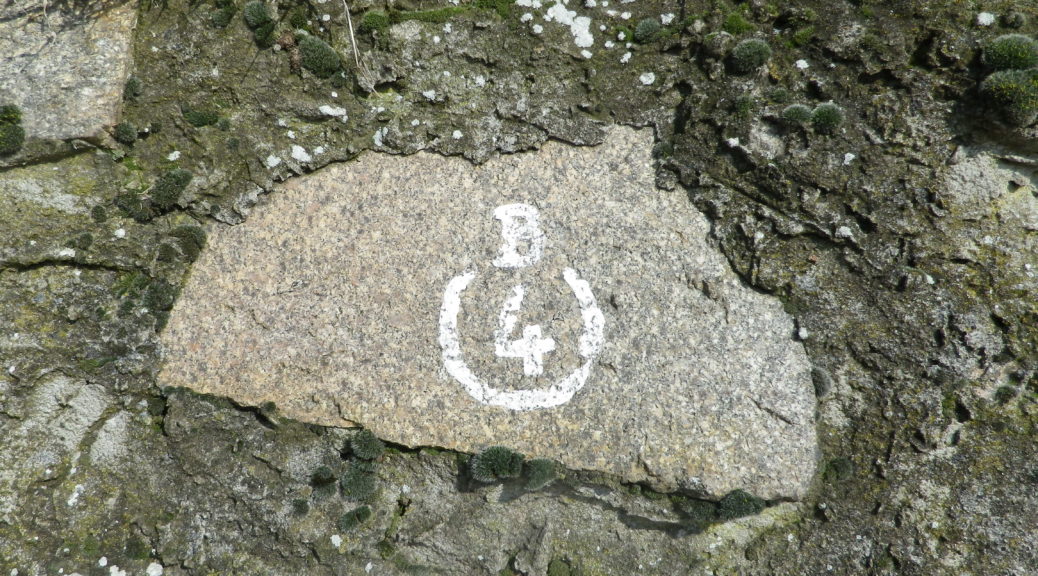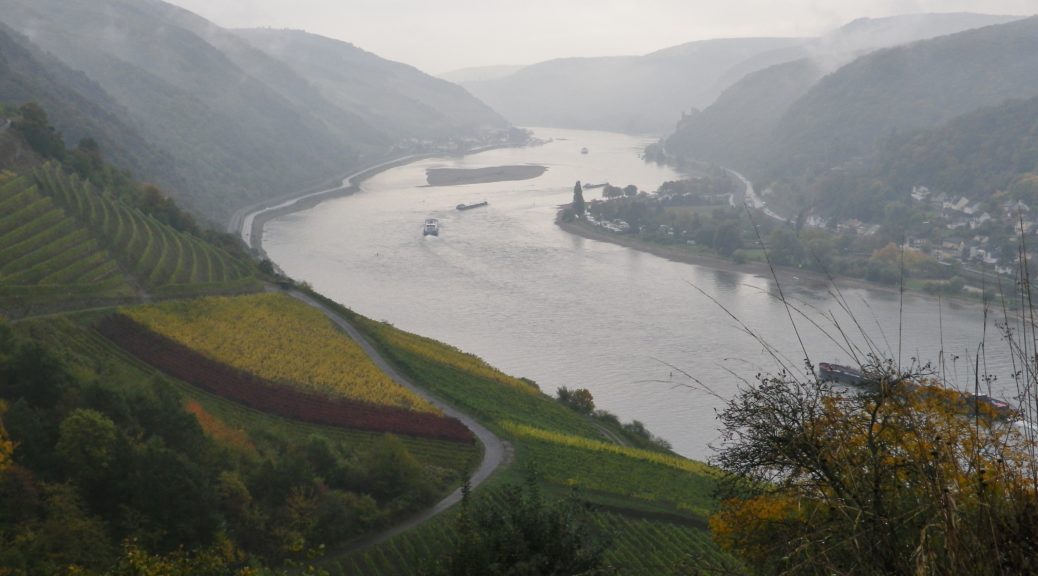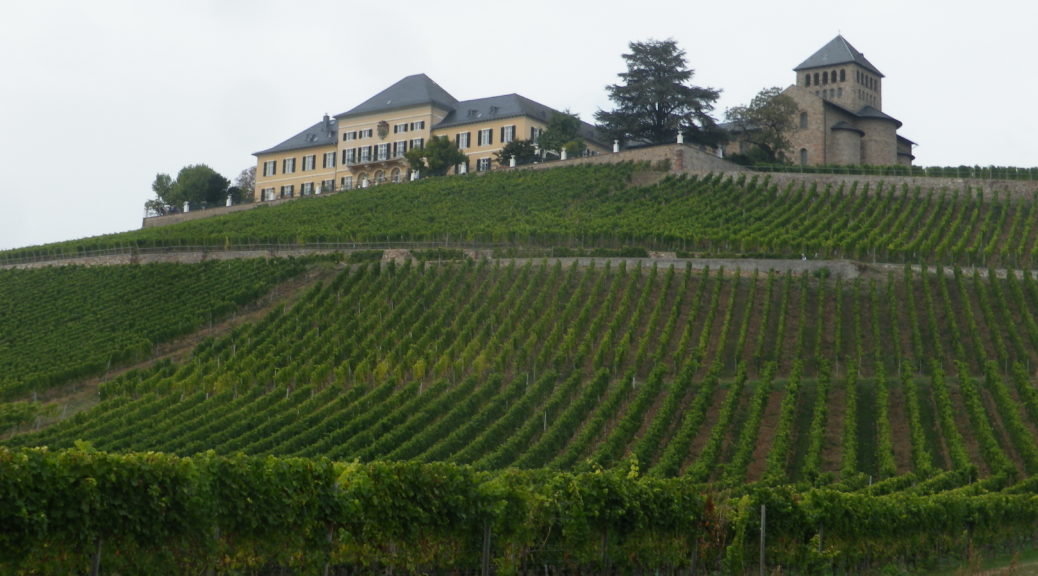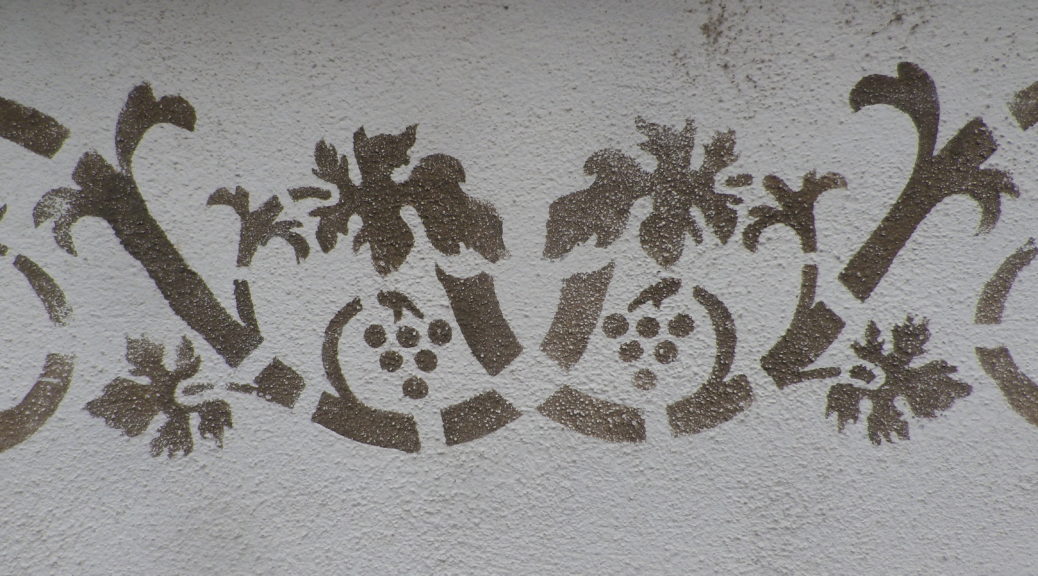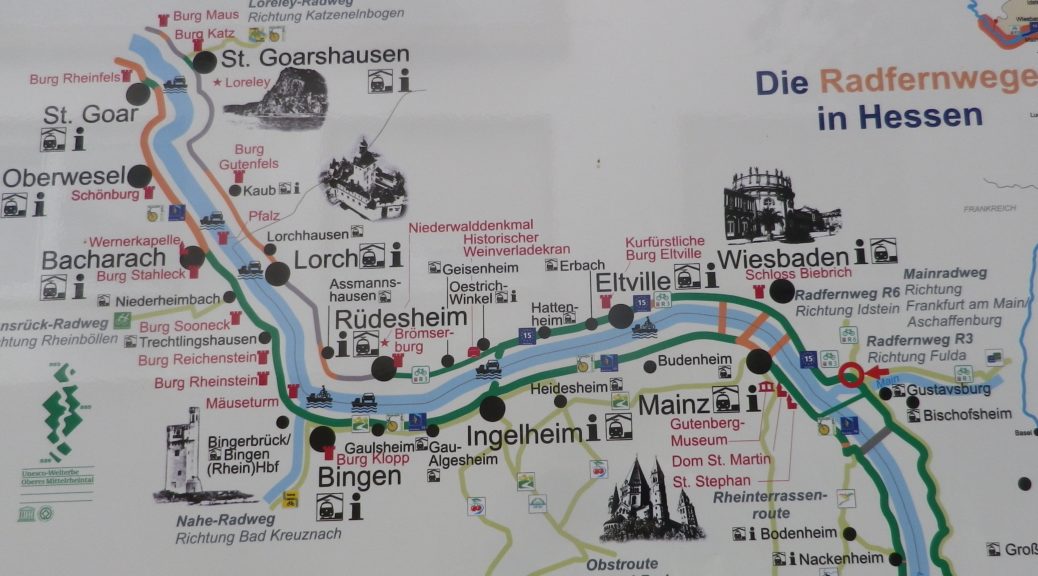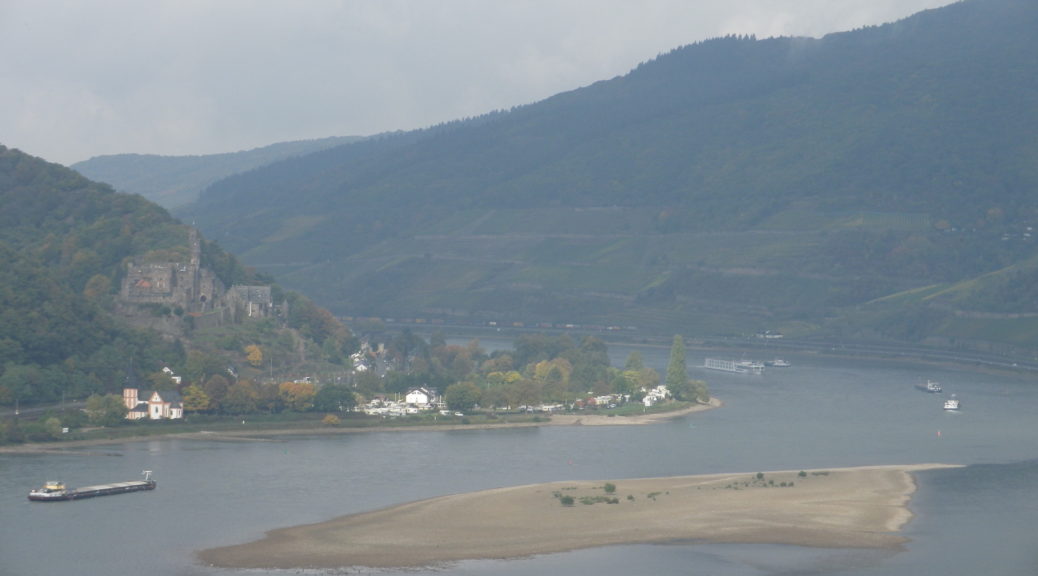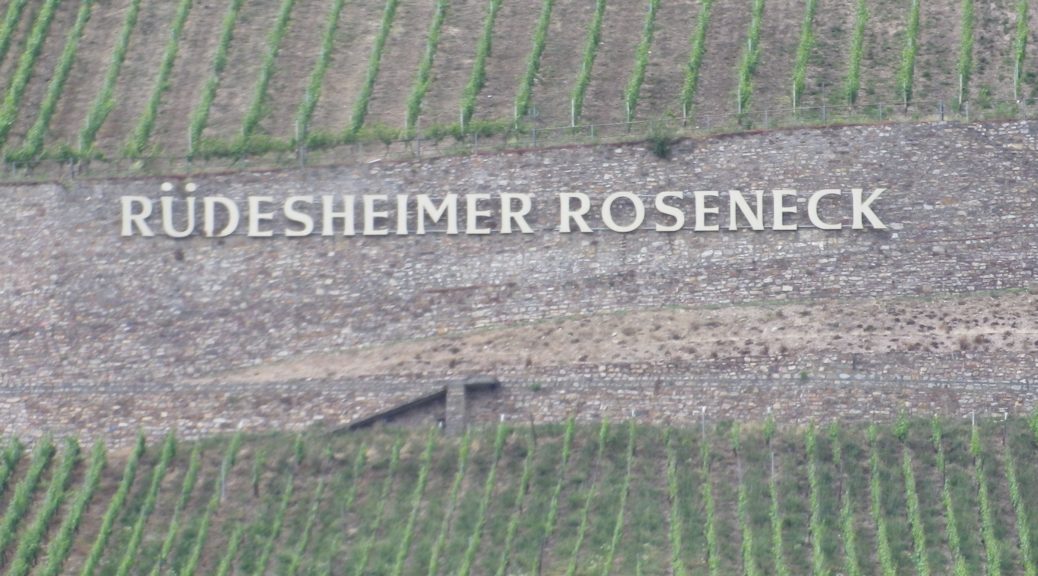Tag Archives: Hesse
Hesse’s Bergstrasse Heights
While not one of the more famous wine regions in Germany, the Hessische Bergstrasse region has a charm all its own. Only about 20 minutes from Heidelberg, a major tourist destination in its own right, with nearby vineyards falling within the Baden wine region, the Hessische Bergstrasse wine region is little known to visitors.
The wine town of Bensheim is but one of several small towns in this wine region, lined up like pearls in a necklace along the tourist road Bergstrasse. (So-called because it runs north to south along the western edge of the hills of the Odenwald forest.) Bensheim is also approximately the center of the Starkenburg wine district of this wine region. My trailhead for this hike was in the charming historic center of town. Filled with colorful half-timbered houses, and lots of architectural detail, it was a delightfully different way to begin hiking.
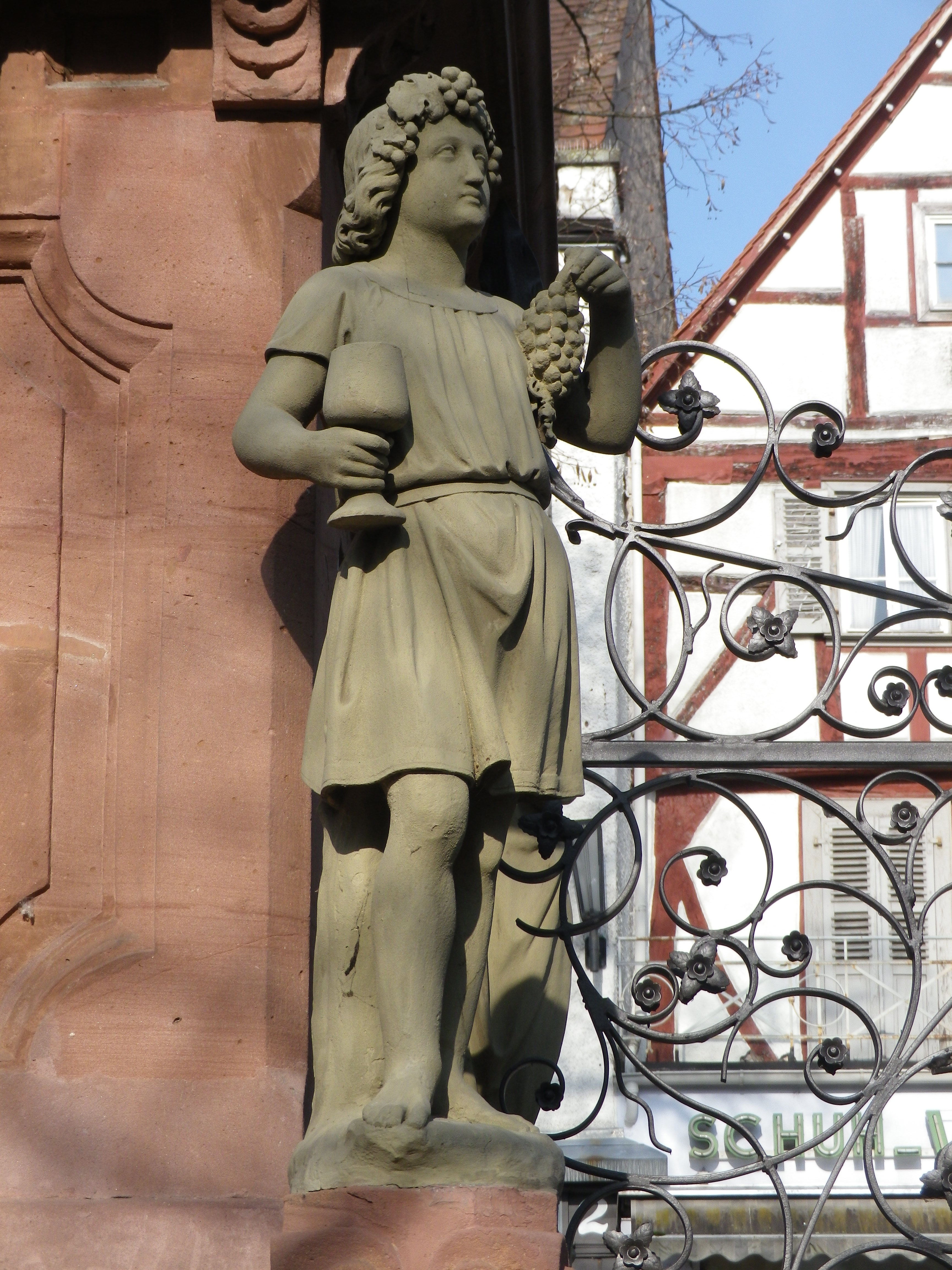
On reaching the outskirts of town, a church with a large cemetery appeared. A quick perusal of the area disclosed tidy, well-kept grave sites, each with distinctive stones. German cemeteries are interesting places to see at least once. Like Roman towns, gravesites were often found on the edge of town. (In fact, many German towns have a Waldfriedhof (a forest cemetery) in the town woods that form part of the township lands.) Now though, there are a couple of residential developments beyond it, but fortunately, the trail avoided those as led up the Hemsberg hill. Thus, the flat terrain of the town abruptly ends.
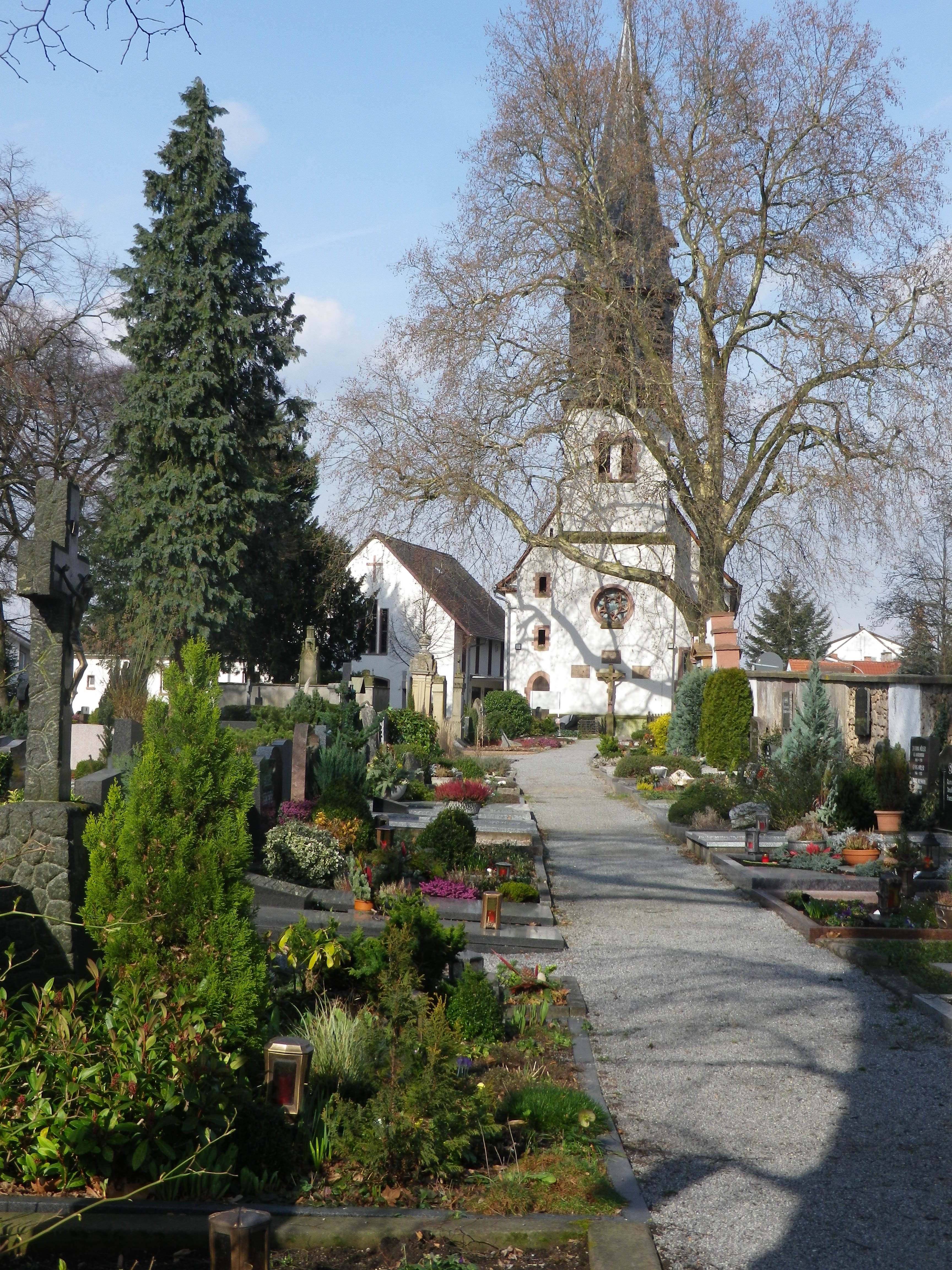
On the Hemsberg, the first of many vineyards began. While upon first entering the vineyard, the views over the Rhine Valley were impressive, once around the Hemsberg hill, the other hills stood out in dramatic relief. Looking east from the Rhine Valley, the hills often seem to be ridgelines. In reality, at least from the trail here, discrete peaks appear, giving the whole area a “hills and dales” character: Like a crumpled piece of tin foil upon which time and nature had intensified the effects.
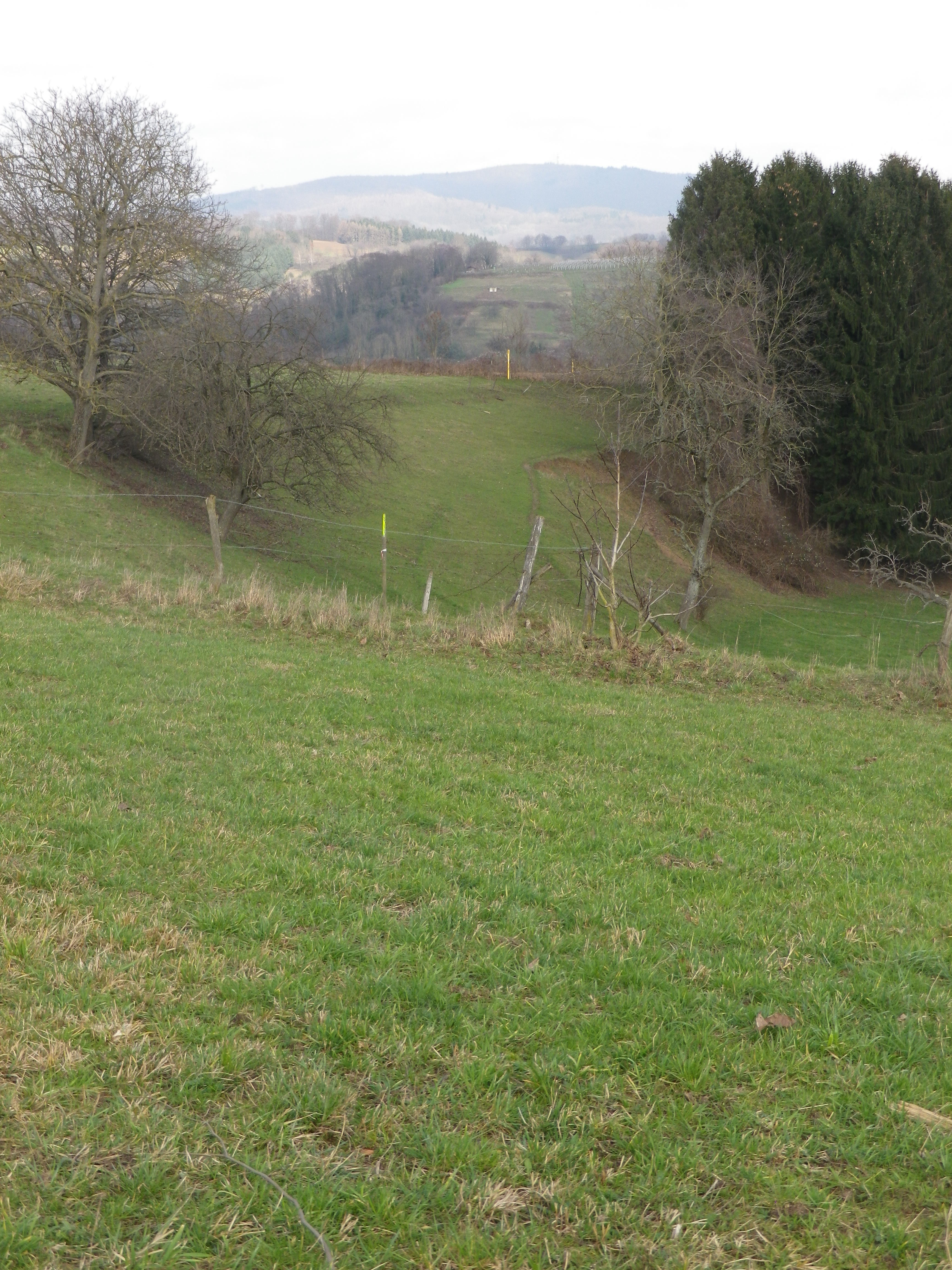
Upon leaving the vineyards, much of the rest of the hike passed through rural scenes: Fallow fields of undulating green, small copses scattered about, strips of brown furrows where the first plowing of the season had begun. Molehills rose before mountains which were tree-covered. Rivulets appeared, and disappeared into streams, the noisy music of water tinkling everywhere. Old trees, some sporting crowns of mistletoe stood as solitary sentries in backwater meadows.
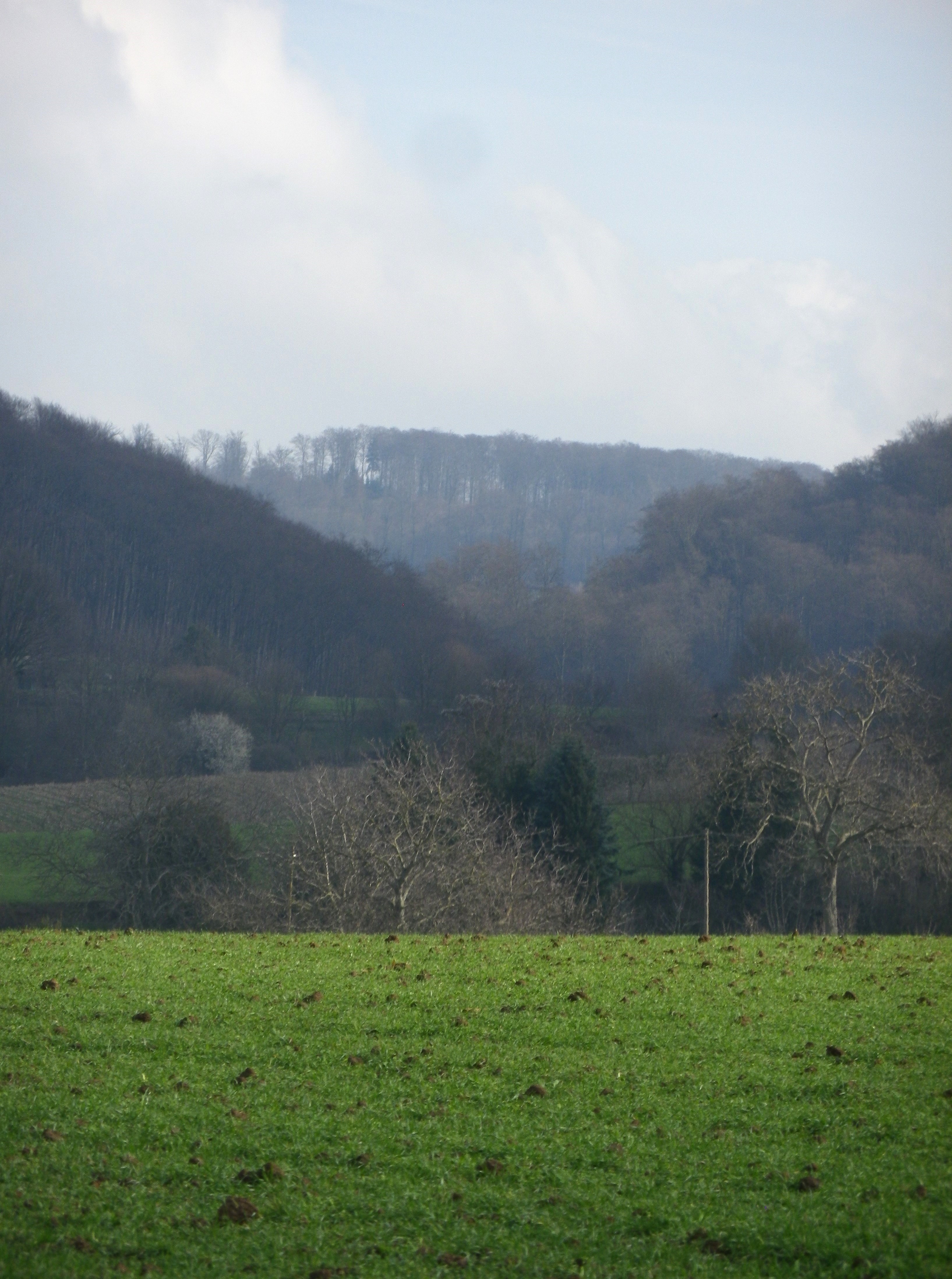
Rounding the trail through Gronau, the trail headed back toward Bensheim. I entered a large woodland, filled with setting sunlight casting long shadows. It was another quiet interlude through nature that ended on a path following the Lauter stream. As trees lined both sides of the stream, it wasn’t until almost back into the heart of Bensheim, that I realized the nature-filled idyll had ended, and the charming town-scape had reappeared. Quiet and lively, idyllic and charming, up and down, the trail itinerary offered a lot to experience, to see, and to taste in this tiny section of the Hessische Bergstrasse.
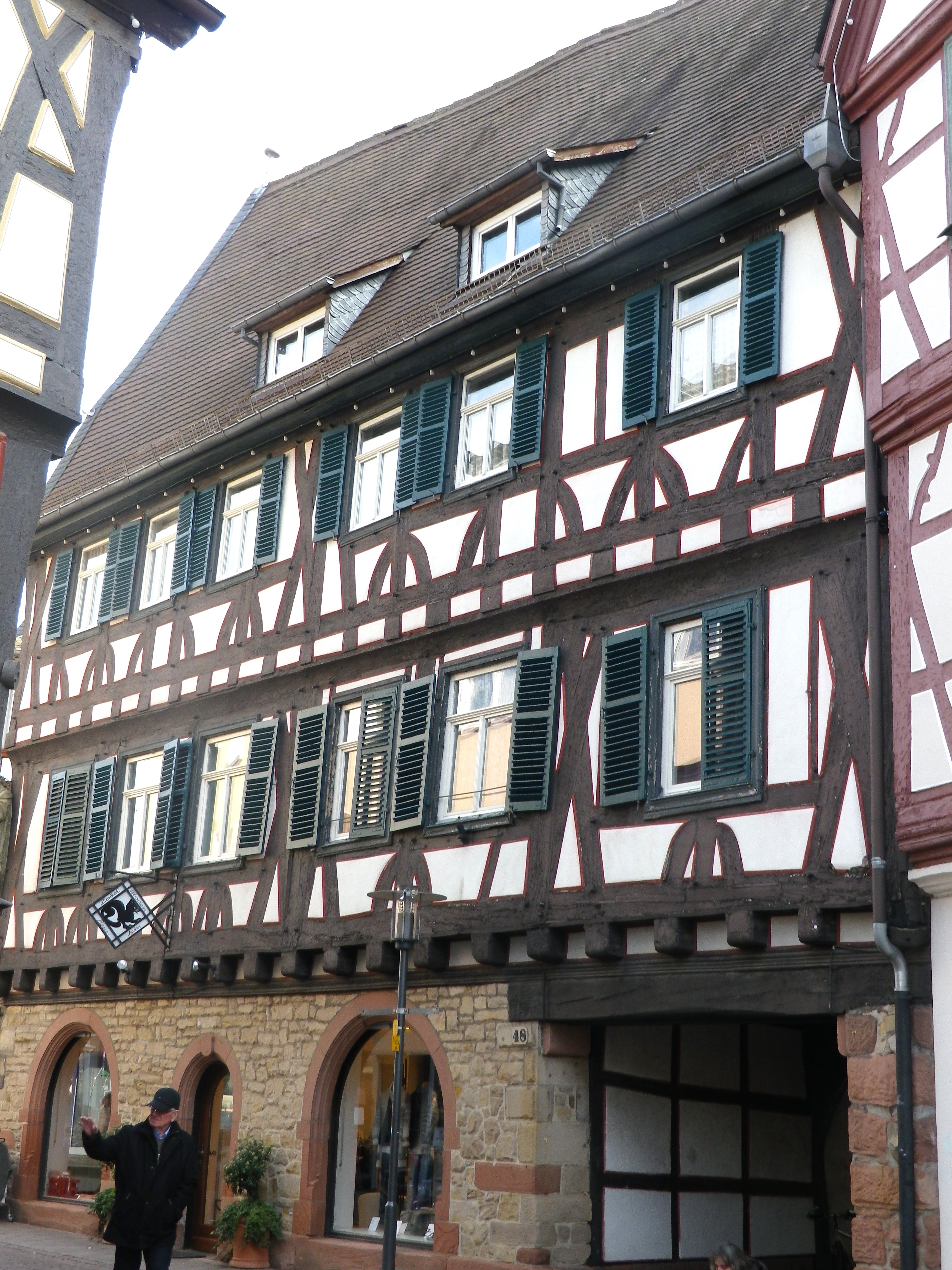
Wine Notes: Hessische Bergstrasse
What I Learned
The Hessische Bergstrasse wine region is not very well known outside of Germany, in spite of the fact that it begins only about 25 kilometers/16 miles north of the well-visited city of Heidelberg. It is the smallest German wine region, and has only two tiny districts. The Starkenburg district falls between the towns of Zwingenberg, to the north, and Heppenheim on the southern end. The town of Bensheim lies about midway between the two. Bensheim itself is home to a well-known Grosslage, the Wolfsmagen. The Streichling, Hemsberg, Stemmler, and Paulus vineyard areas cover the hills south and east of the old town. Much of the Hemsberg and Paulus have nice exposure to the sun as it sinks behind the Haardt mountains in the Pfalz, on the western side of the Rhine River valley. The Kirchberg and Kalkgasse lie separately, on the northern side of the old town center. Thus, the Wolfsmagen Grosslage can claim almost as much as acreage as the total acreage in the Umstadt district, the other, northern, district within the Hessische Bergstrasse wine region.
The principal grape varietals grown here are Riesling, Grauburgunder, Weissburgunder, and Silvaner. Spaetburgunder is the only red varietal grown here in significant quantities, although, some Dornfelder may be found and used in wine blends.
What I Tasted
2015 Riesling, Bensheimer Wolfsmagen, Hessische Bergstrasse, Trocken, Qualitaetswein, Weingut Goetzinger: A dry white wine with light plus gold color, green apple and fresh cut grass nose, with green apple and fresh cut grass flavors, with a hint of smoke, tart finish with medium plus acidity.
2014 Riesling, Bensheimer Hemsberg, Trocken, Qualitaetswein, Bergstraesser Winzer: A dry white wine with medium-light gold color; talc and slightly floral nose; citrus flavors, some hints of vanilla, mild acidity.
Rotsekt, Cuvee, Halbtrocken, Weinkellerei Josef Mohr (Bensheim): A semi-dry sparkling red wine (mostly Dornfelder) with dark cranberry red color and fine bubbles; nose of spices, predominantly cloves, and red berry and spice flavors.
Lichte Hoehe, Weinberge und Waelder: Trail in a Nutshell
Trail Name: Lichte Hoehe, Weinberge und Waelder (AKA: (Benheim’s) B4, and Gronau Weg)
Trail Type: Mid-distance circuit trail; partly paved, otherwise hard-packed earthen surfaces, well maintained, route well marked in most places.
Length:
Total: 13 km/8 miles
Marking: B4, written in white letters on a number of surfaces. See the photos below and above.
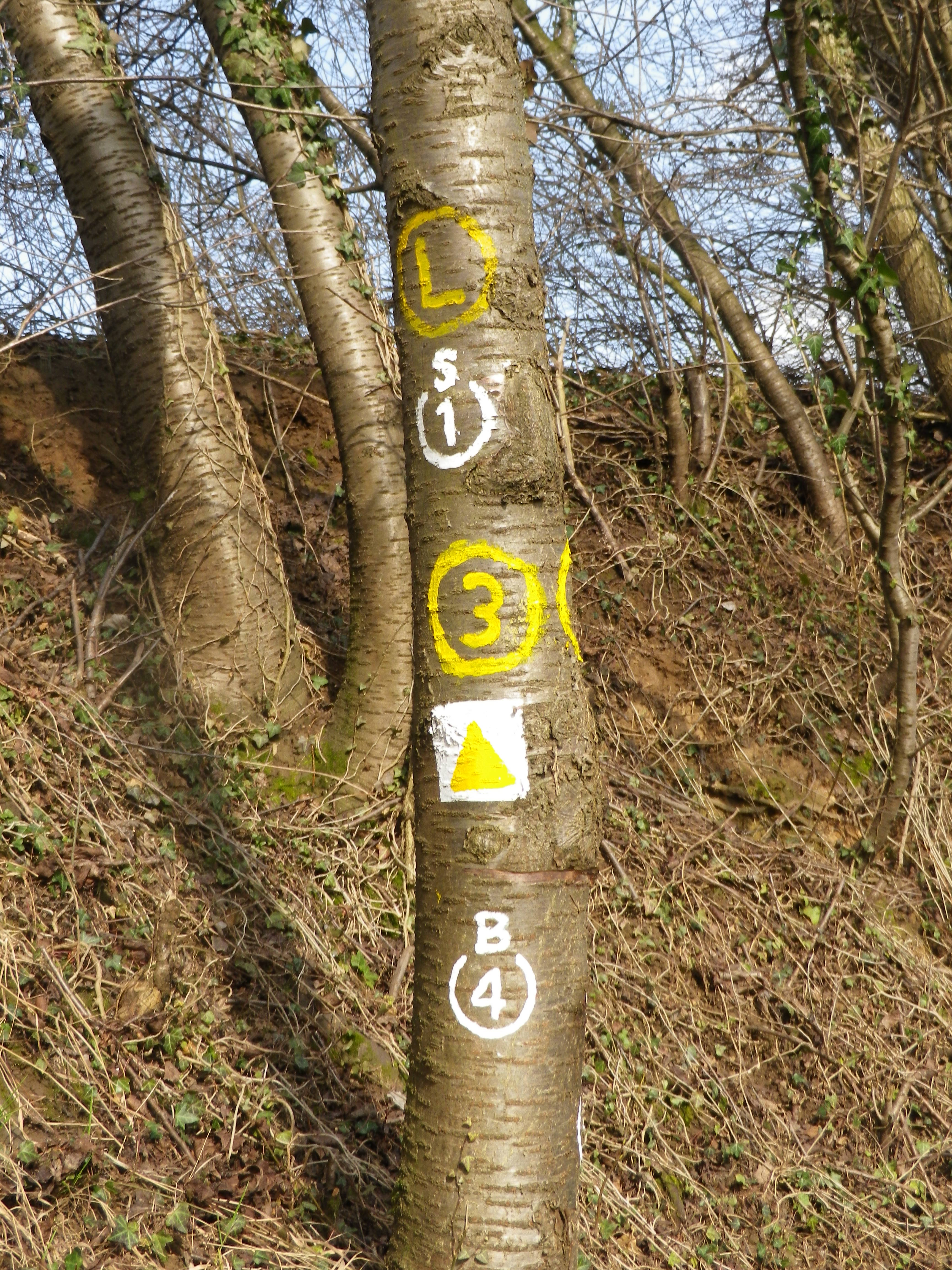
Trail Description: A real rambler’s ideal: such a variety of landscape, vegetation, and views can be difficult to find along other short trails. Mostly easy, with a couple of mildly challenging ascents, this trail, proceeding from urban to fields and forests, and back, seemed miles from Heidelberg and the busy Rhine River Valley cities, but was quite accessible from them.
Trailhead:
Bensheim: B47 (Nibelungenstr) x Bassmannweg
Parking Possibilities:
Bensheim: B47 (Nibelungenstr) x Bassmannweg
Public Transportation Options:
Rail: Frequent trains from most major cities north, south and west of this town. Check Deutsche Bahn for details.
Suggested Stages: Not applicable
Trail Itinerary-Reference Points: (clockwise)
Bensheim: Hauptstrasse x Gebergasse, Friedhofstr, past the cemetery and church, Hemsbergstr- Hemsbergweg, follow toward Hemsberg, vineyards, fields to Gronau; Gronau: Steinfoerstweg, Maerkerwaldstr; follow signs toward Schoenberger Kreuz; forest, Nibelungenstr (and path beside the Lauter creek); Bensheim: Bleichstr, Augartenstr, pass Marktplatz, Hauptstrasse.
Representative Trail Photos:
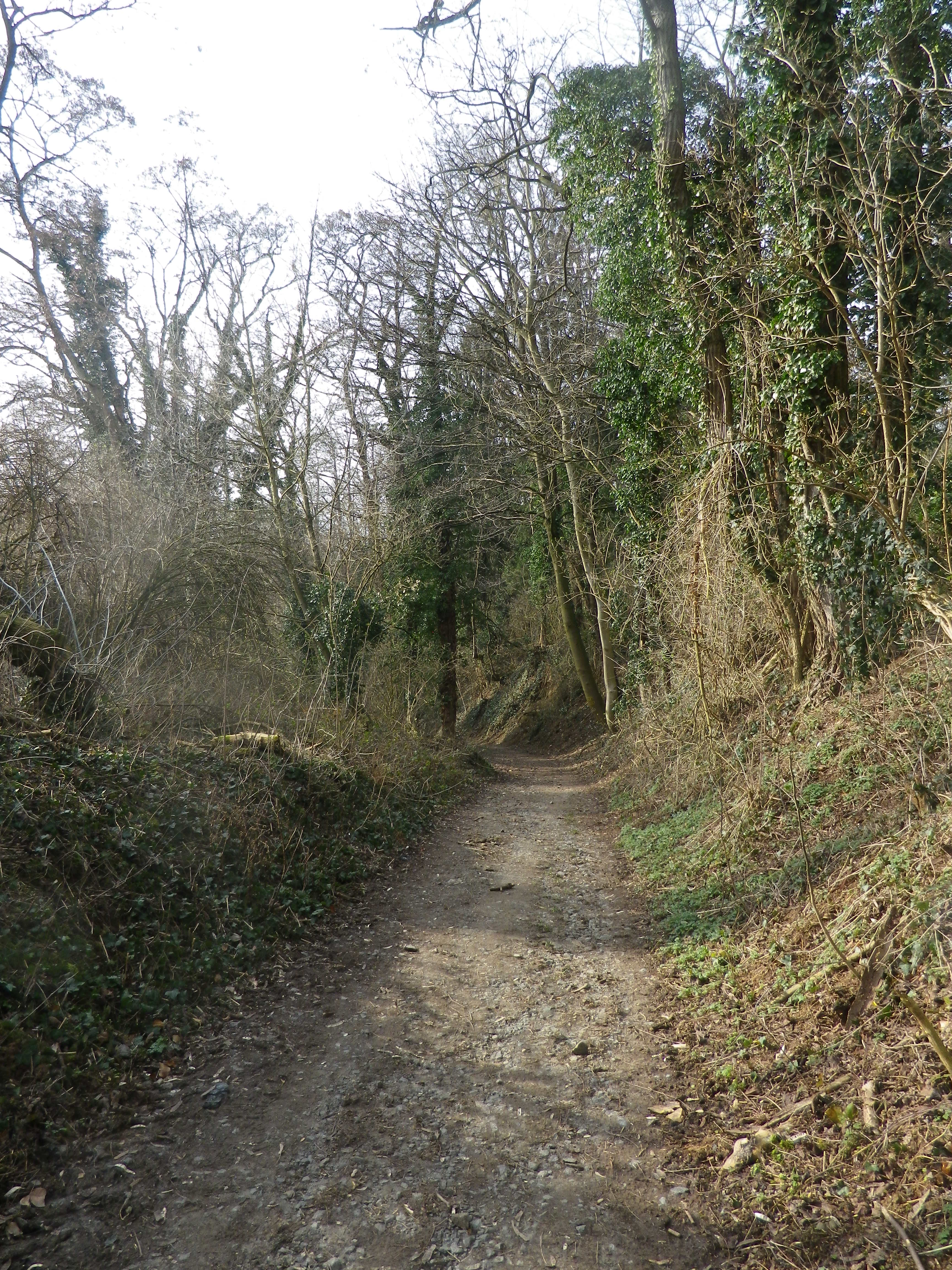
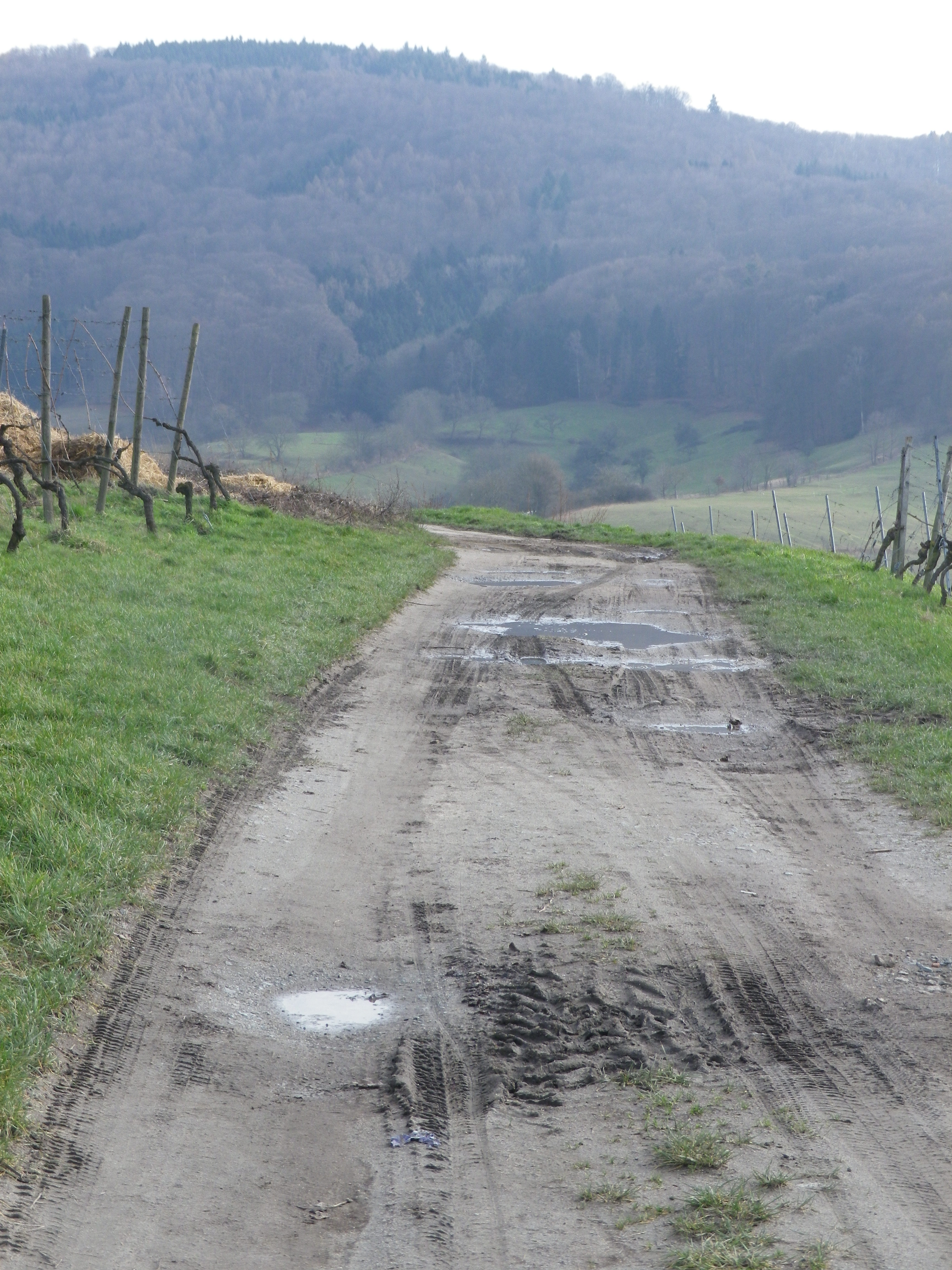
Restrooms:
Bensheim: Haus am Markt, Marktplatz//Buergerbuero: Hauptstr 39//Bahnhof, in front of it
Attractions on or near Trail:
See Tasting notes below, reference Heppenheim.
Tasting along the Trail:
Bensheim: A couple of wine-makers in the town of Bensheim, several pubs/wine bars offering local wines.
Heppenheim: Nearby town has the Bergstraesser Winzer, a wine cooperative, wine shop and wine tasting lounge, where you will find lots of information about wines and wine-making in this area.
Alternative Options:
Biking: Winzer und Weinstuben Tour, an easy 19-kilometer long bicycle route passing vineyards, wine bars and wineries. See the Nutshell here.
Car: Ferienstrasse Bergstrasse, a 28-kilometer car touring route, includes Bensheim and many more towns, many of them wine producing towns, from Darmstadt to Heidelberg.
Additional Information:
Regional: https://www.bensheim.de/tourismus/touristinformation.html
Trail specific: https://www.bensheim.de/fileadmin/media/bensheim/06-Tourismus/Wanderungen-um-Bensheim.pdf (starting p. 32); AKA: Gronau-Weg
Comments:
The trail name says it all: An easy and very relaxing experience, in a little-known wine region.
Gallery November 2019
Riding Through Riesling
After having hiked through the steep and forested slopes of the Mittelrhein, I continued my tour of the Rheingau wine region’s vineyards by bicycle. At Ruedesheim, I left the Rheingauer Riesling-pfad (see here), and hopped on a bike following the Rheingauer Riesling Route. The two trails cover the Rheingau vineyard area, but following somewhat different routes.
I was immediately struck by how different the wine area upriver from Ruedesheim is from that downriver of it. Upriver from Ruedesheim, the world heritage site of the “Mittelrhein” ends. The obvious difference is that the river suddenly opens up again. The narrow chasm defining the romantic middle Rhine with its vertiginously steep slopes disappears, replaced by gentler vine-bearing slopes. Cities soon replace quaint villages, and the river takes on a more business-like aspect, industry, ports for shipping, and riverside loading facilities.
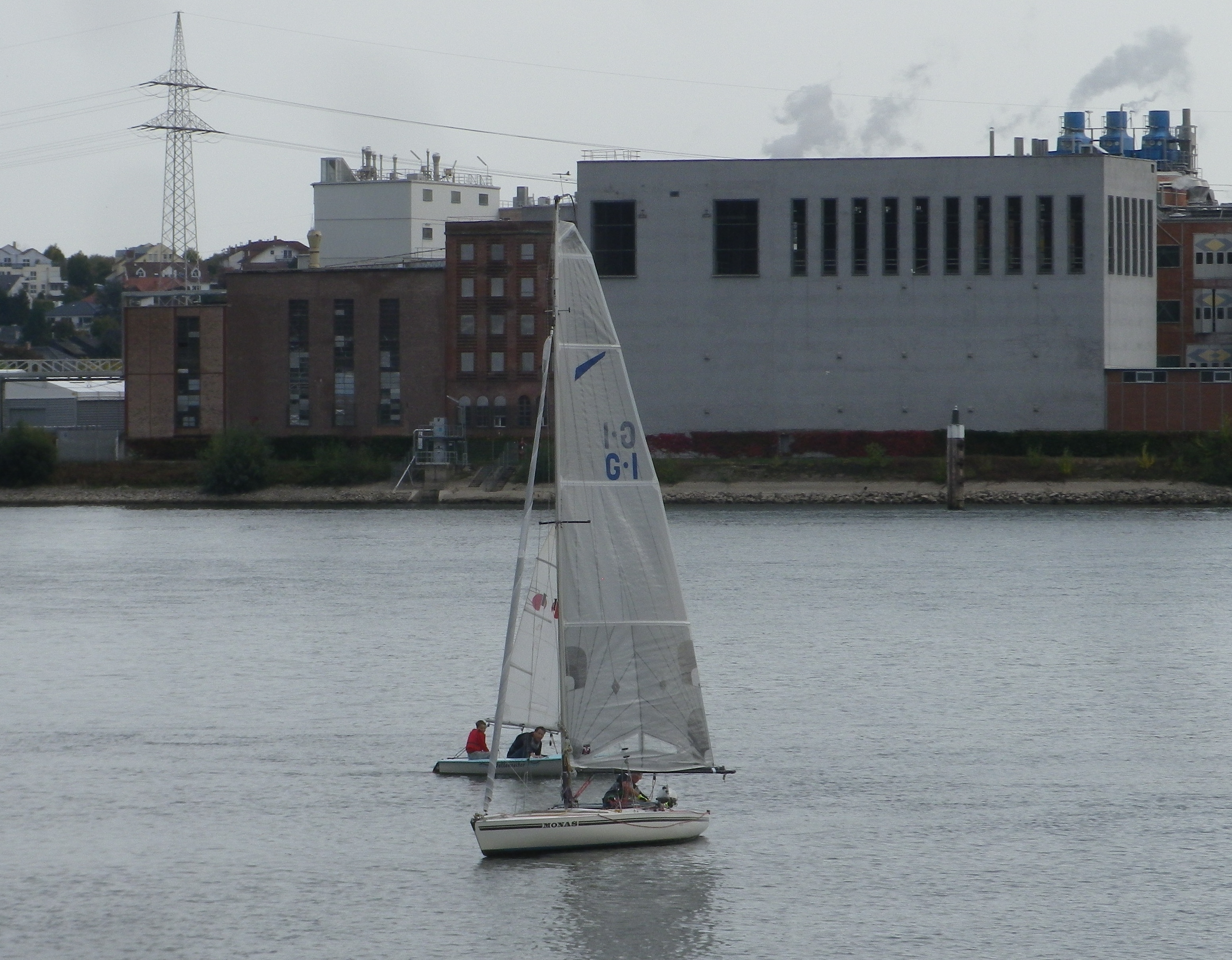
Wine Notes: Rheingau II
What I Learned
The Rheingau, in the German state of Hesse, has one of the smallest total vineyard areas in all of Germany. But nonetheless, it has a huge importance in the world of wines. It is not only one of the most famous wine areas in Germany, it is also strung along one of the most famous stretches of river in the world!
Rheingau wine aficionados can point with pride to a long and continuous tradition of wine-making in this area: from having one of the oldest wine estates in Germany, Schloss Vollrads, to a monastery founded by the medieval St Hildegard, where the nuns still grow grapes.
Rheingauer Riesling Route: Trail in a Nutshell
Trail Name: Rheingauer Riesling Route
Trail Type: Long distance trail; almost exclusively paved, well maintained; the route itself is marked in part with the wine glass marking (see below), and other parts are marked with an R3.
Length:
Total: 62 kilometers/38.5 miles (Kaub to Floersheim)
Segment: 49 kilometers/30.5 miles (Ruedesheim to Floersheim)
Convenient to: Wiesbaden, or Mainz, Germany
Marking:
White wine glass with a crown on a green background; Alternatively: R3 and R3a (variant to Kloster Eberbach). Where the icon marking is not easily found, follow the R3 or R3a signs.
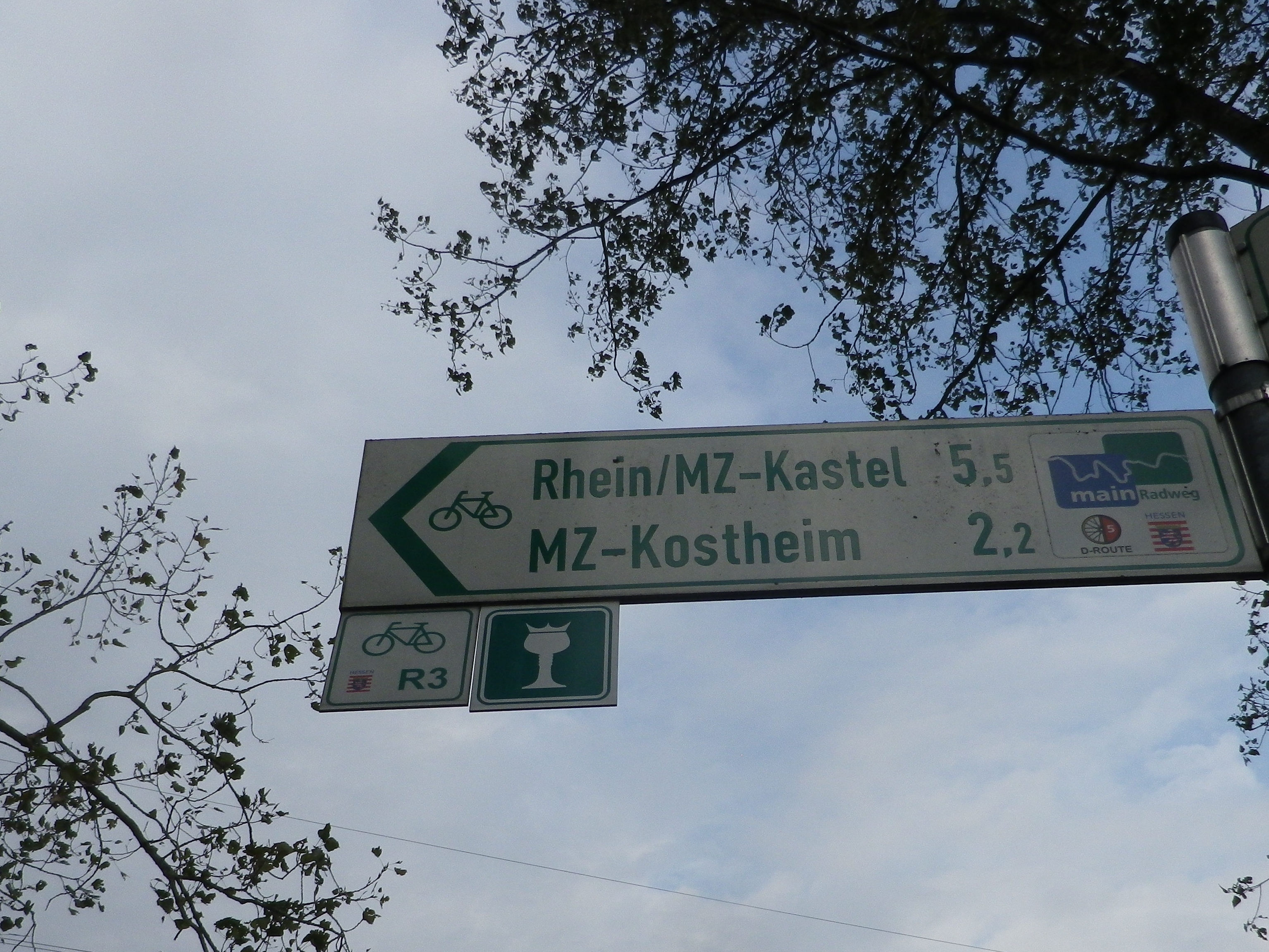
Continue reading Rheingauer Riesling Route: Trail in a Nutshell
A Rheingau and Middle Rhine Trail
The German state of Hesse is home to one of the most famous wine regions in the world for Riesling wine: the Rheingau. Here, hectares of terraced vineyards looming above the middle Rhine River arguably form the world’s most iconic riverine vineyard site.
Two trails named in honor of the Rheingau’s most famous product, Riesling wine, pass through these vineyards. One is a hiking trail, and the other is a cycling route. Both start together in Kaub, and follow the Rhine upriver. Both are over 60 kilometers long, the hiking trail actually being 91 kilometers in length. Not having enough time to hike the whole trail, and not knowing when I would get back to the area, I decided to cover half of the Rheingau trails’ area by hiking the northern half of the hiking trail, and then by cycling the southern half of the bicycle route.
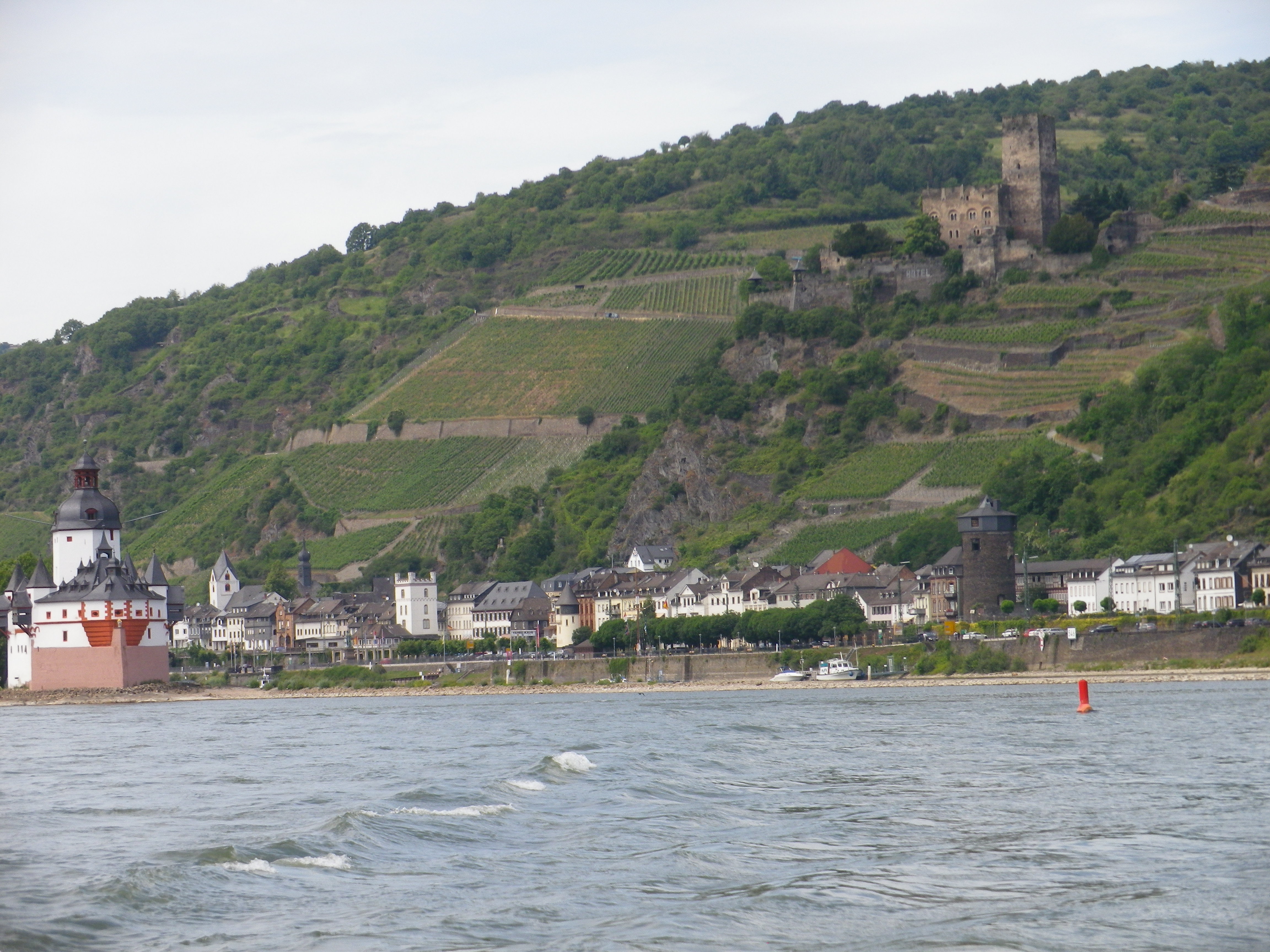
Wine Notes: Rheingau I
What I Learned
According to many experts, Riesling wine reaches its pinnacle in the Rheingau. Here, the vintners have been making this wine, almost exclusively this wine, for hundreds of years. Locals as well as buyers from around the world eagerly await the resulting products each year. And from the modest-sized family wineries to the large international concerns, each winery will offer a range of Riesling wines, in styles ranging from dry to off-dry to sweet.
The most basic Riesling will be a Qualitaetswein. Next up the quality scale is a Kabinett Riesling.
